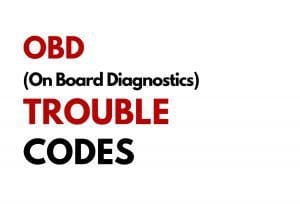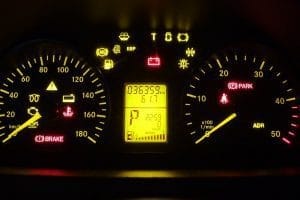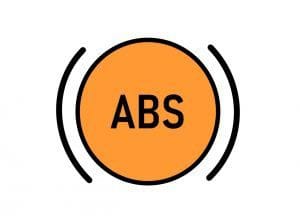How long is a School bus?
There are four types of school bus:-
1- Length of type A Schoolbus- 20-25 feet
2- Length of type B Schoolbus- 22-30 feet
3- Length of type C Schoolbus- 25-35 feet (most common size used worldwide)
4- Length of type D Schoolbus- 30-45 feet (max)

Note:
The maximum width of buses in Canada and the United States is restricted to 102inches (2.59m) and a maximum length of 45 ft (13.7 m).
The size, weight, and types of schoolbus vary from country to country, we will try to cover every aspect related to the school bus to resolve most of your doubts and queries.
The maximum seating capacity is 90 passengers in Type D buses, which is the largest in terms of area.
Types of School buses
The different types of school busses are classified on the basis of their chassis structure and design-
There are generally 4 types of schoolbus produced by the manufacturer.

1- Type A School Bus:
- These are the smallest school buses (based on cutaway van chassis)
- Easier to drive an park
- Capacity of passengers- 11-30
- Length- 20-25 feet
- Gross Weight- 10000 lb-11000 lb
2- Type B School Bus:
- These are medium format buses (bodied on bare front-engine chassis)
- Capacity of passengers- 11-54
- Length- 22-30 feet
- Gross Weight- 10000 lb-20000 lb
3- Type C School Bus:
- These are larger format buses with the most preferable economic sizes (bodied on cowled medium-duty truck chassis)
- Capacity of passengers- 50-78
- Length- 25-35 feet
- Gross Weight- 22000 lb-29700 lb
Note:
Type C is the most common size used as a school bus worldwide.
4- Type D School Bus:
- These are the largest format buses (bodied on bare “forward control” or “pusher” chassis).
- Capacity of passengers- 70-90 max
- Length- 30-45 feet
- Gross Weight- 25000 lb-36500 lb
- Difficult to park
- Also known as forward engine or rear engine buses
Necessary regulations for School bus
Shows us a clear picture of necessary regulations that need to be followed and practiced for driving a schoolbus.

Licensing-
Schoolbus drivers in the United States are required to hold a commercial driver’s license (CDL). Full-size school buses are generally considered Class B vehicles; most van-based schoolbuses are considered Class C vehicles. In addition to a standard P (passenger) endorsement, school bus drivers must acquire a separate S (school bus) endorsement; along with a written and driving test, the endorsement requires a background check and sex offender registry check.
How much does a School bus weigh
Type A- 10000 lb-11000 lb, In some exceptional cases it can exceed 14000 lb.
Type B- 10000 lb-20000 lb
Type C- 22000 lb-29700 lb (most commonly used worldwide
Type D- 25000 lb-36500 lb
How much does a School bus cost
Type A
- New- 15000$ – 30000$
- Old/Used- Min 6000$
Type B
- New- 30000$ – 50000$
- Old/Used- Min 7000$
Type C
- New- 35000$ – 60000$
- Old/Used- Min 8000$
Type D
- New- 45000$ – 90000$
- Old/Used- Min 10000$
How much does a School bus rental cost?
In general, the cost of renting a schoolbus ranges from $350 and $750 per-day.
Please note that this price is subject to vary based on many factors such as country, region, your trip date, length, and location.
There is a three to four-hour minimum rental fee, as per industry standards.
Major 6 causes of School bus accidents

How to thank a bus driver
1- Bus driver appreciation card
You can thanks your bus driver for the service he served to you by giving him credit and appreciation card, some examples headers that you can use on your card are-
- Thanks for going the extra mile
- You always wear a smile, so here’s the thanks you so deserve, for each and every mile!
- Thank you for all you do to get us safely to and from school!
- Thanks for being an awesome bus driver.
2- Prepare a special thank you meal or snack on days of festivals.
3- Appreciate him verbally whenever possible for his services, with a great smile.
Factors to be considered before the conversion of the School bus
1- Type of bus selection
The type of bus you want for your conversion depends on the usage whether you are going for a full time, part time or just for once in a while purpose. Another major factor that decides bus selection is estimated budget and the amount of space you want.
2- Design
Preparing a bus layout both interior and exterior, for this you might take help of Google, Youtube or Pinterest to find creative ideas and layout options, make sure to consider bus measurements while designing or planning any layout.
3- Living plans
While designing you should take into account that whether you will be living in it is occasionally part time or full time.
If you are planning to live for a long period of time consider a big school bus, but if you plan to live for just every once in a while consider buying a small bus.
4- Skills
This includes the area of your expertise in building and designing things such as: are you comfortable with woodworking, plumbing, machining, electrical work etc. If not then you can take third party help in building it for you.
5- Budget
Budget is the most important factor to consider while converting your school bus. If you have a limited budget you can purchase an already converted bus at a cheap cost where you just have to remodel the interior as per your interest, but if you are willing to pay a higher amount you can surely start from scratch.
6-Time availability
Before you plan to start converting the school bus make sure that you have enough time to spend on working with your school bus as it is a large project which will require a lot of time to complete. Time consumption generally depends on the type of bus you purchase and its size.
7- Resources
It includes factors like do you have an ample amount of space where you can design and engineer your school bus, do you have the required set of tools that you need for conversion, do you have the right experience for different processes, etc.
Pay close attention in managing resources because it can increase or decrease your budget accordingly.
8- Transmission,Engine and Fuel type
When it comes to transmission you might have to consider whether you want a manual or automatic transmission. Choose the type of transmission according to your ease of use.
Choose the type of fuel or engine you want in your school bus whether you want a diesel engine or gasoline engine choice is yours but choose as per your experience because there are many situations where you must be aware of the type of engine you are using.
School bus conversion ideas
FAQ
What is the average length of a school bus?
The average length of the school bus ranges from 25 to 35 ft.
How many feet long is a bus?
The length of School bus are categorized in four types-
Type A= 20ft to 25ft
Type B= 22ft to 30ft
Type C= 25ft to 35ft
Type D= 30ft to 45ft
What is the biggest school bus?
The biggest school bus is a type D school bus full-size school bus is 45 ft to 50ft in length and 7.5ft to max 8.5-9.0ft in width.
How big is a full size school bus?
A full-size school bus (Type D) is 45 ft to 50ft in length and 7.5ft to max 9.0ft in width.
How many feet long is a 72 passenger school bus?
25ft to 35ft long, these are type C school buses which can carry a passenger capacity from 50 to 78.
How wide is a full sized school bus?
The maximum size of a full-size school bus can be 8.5ft (102inches) as per the regulations in Canada and United States max 9ft worldwide.








